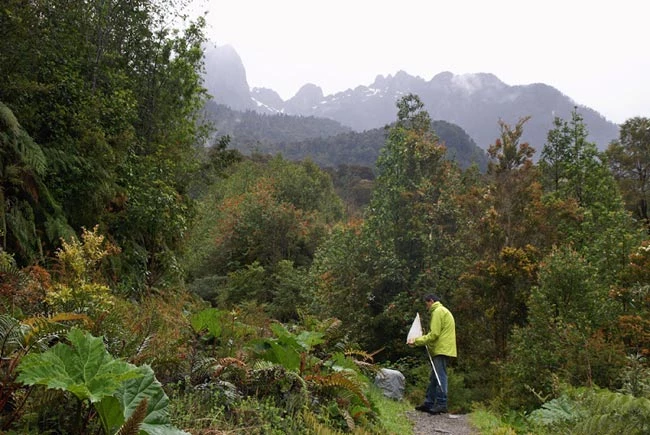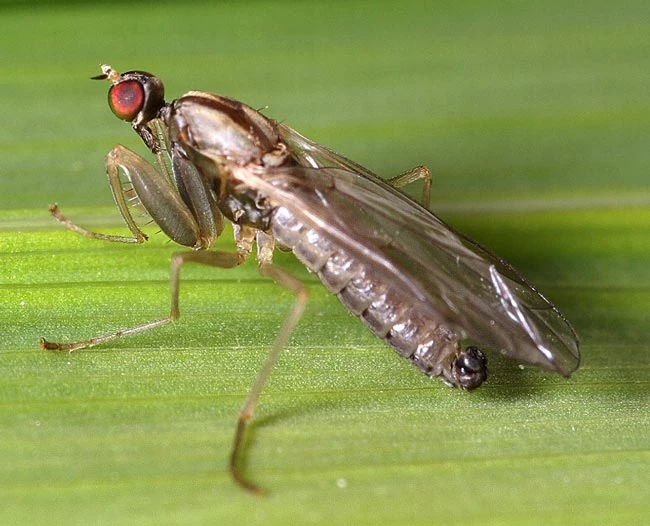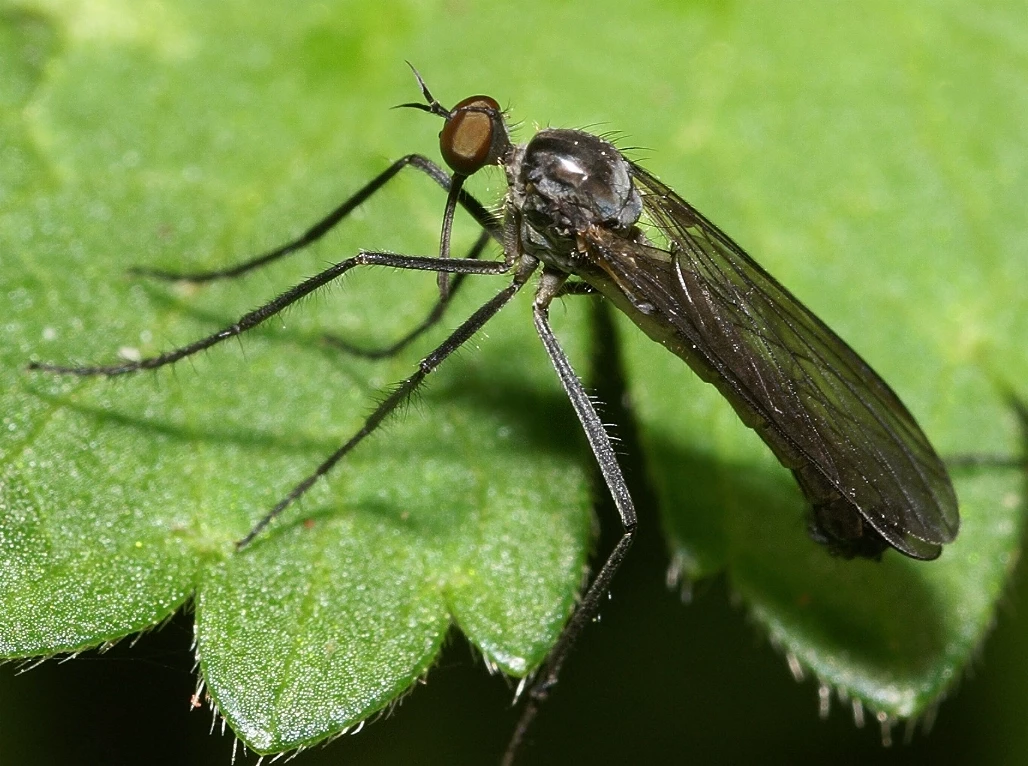Species new to science: Dance-Flies from Chile
Collecting insects, Alerce Andino, Chile.
sp. (about 4 mm long)
sp. (about 4 mm long).
sp. An undescribed species of the macrorrhncha-group (about 6 mm long).
An undescribed species of Neotrichina (about 4 mm long).
All species are constantly evolving, and their current distributions and diversity, even in the local context of Wales, have been determined by factors such as climate change, continental drift and ecology. Scientists must therefore study organisms in a global context in order to properly appreciate how they fit into the Tree of Life.
This is very much the case with insects, including flies (Diptera). Their major evolutionary lineages appeared in the remote past, at places now separated by the drifting apart of continents. For instance, many major species of Diptera evolved in Patagonia and Australasia, at a time when these lands formed part of the ancient supercontinent of Gondwana.
In temperate regions, flies known as 'dance-flies' (Empidoidea) are numerous and may account for 10% of all fly species. Some feed on flowers and are important in pollination, while most are fierce predators of other invertebrates helping significantly to regulate pests. Still others have complicated mating rituals involving spectacular display flights and the presentation of dead insects as 'presents'!
The Empidoidea first appeared in Gondwana in Jurassic times, at least 160 million years ago. As the supercontinent broke up and the continental fragments drifted apart, there was a massive increase in diversity of these flies.
Collaboration between entomologists at Amgueddfa Cymru and other museums around the World have improved our understanding of the evolutionary history of these flies.
One such project saw a team of entomologists from Amgueddfa Cymru and the Muséum national d'Histoire naturelle in Paris embarking on an expedition to Patagonia sponsored by CAFOTROP (CAnopée des FOrêts TROPicales).
The objective was to look for new Gondwanic species in the dense temperate rainforests of Chilean Patagonia using specialist sampling methods of close searching, netting and trapping. This was followed by sifting, sorting and preserving the catch, ready for preparation and identification of the specimens once back in the laboratory.
These southern temperate rainforest proved very rich in Empidoidea with three weeks collecting resulting in some 8,000 specimens, including many species unknown to science.
Many genera have been identified that are now restricted to locations that were once part of Gondwana, such as Ceratomerus, Clinorhampha, and Cladodromia. Particularly exciting was finding new species of the Empis macrorryncha - a group of flies that are closely related to species of the same group known from SW Australia.
This suggests these species evolved from a common ancestor which probably lived before the Gondwana continent fragmented.




